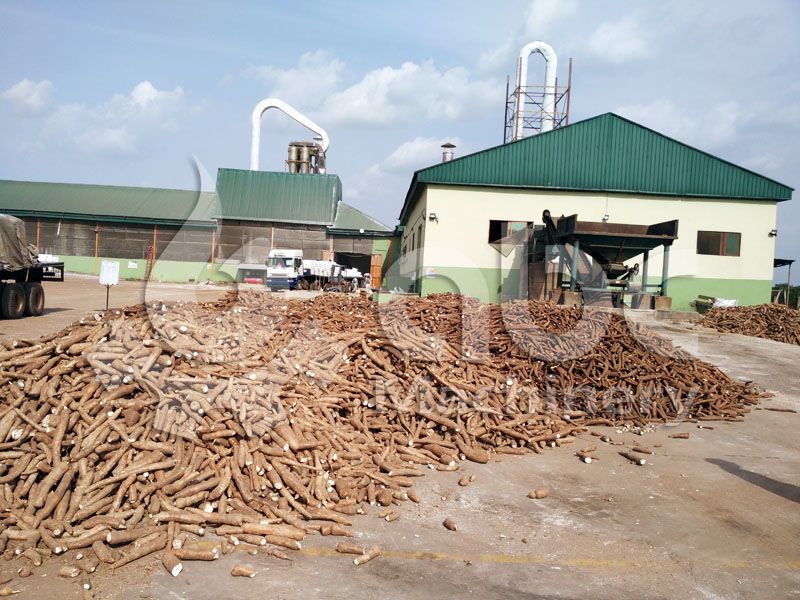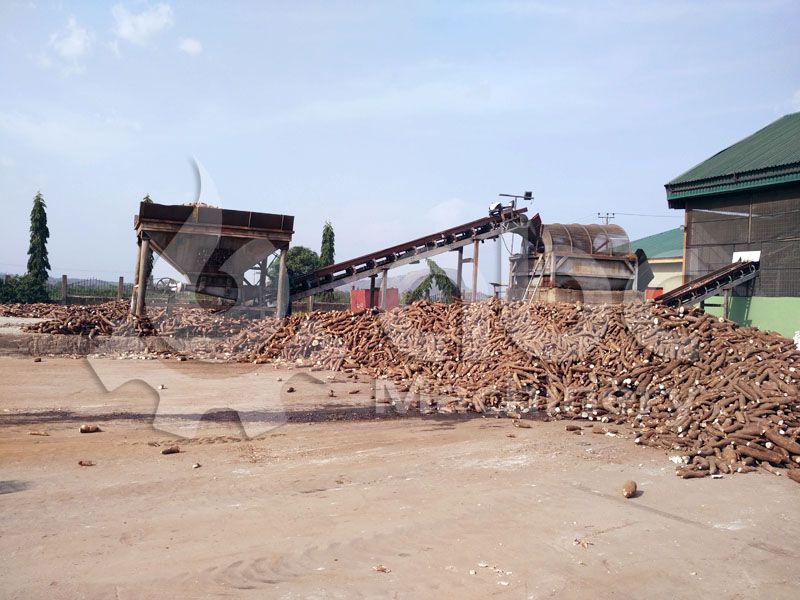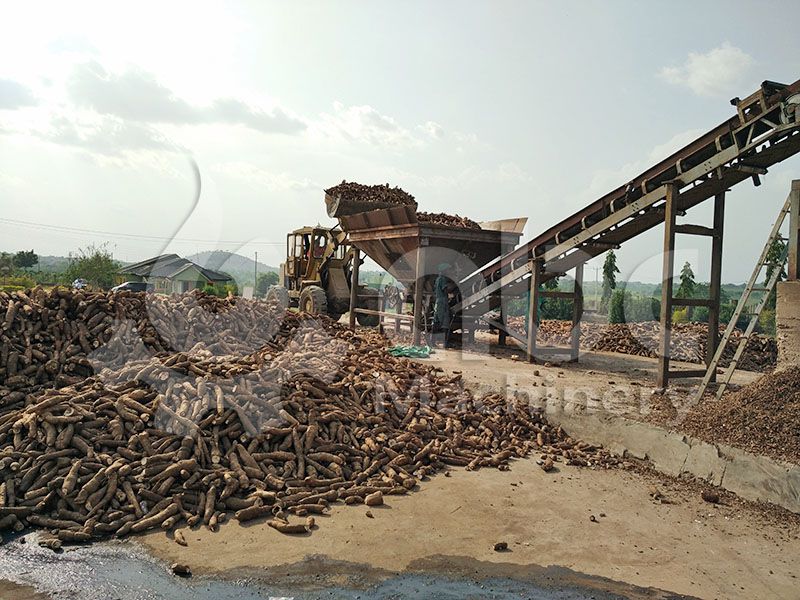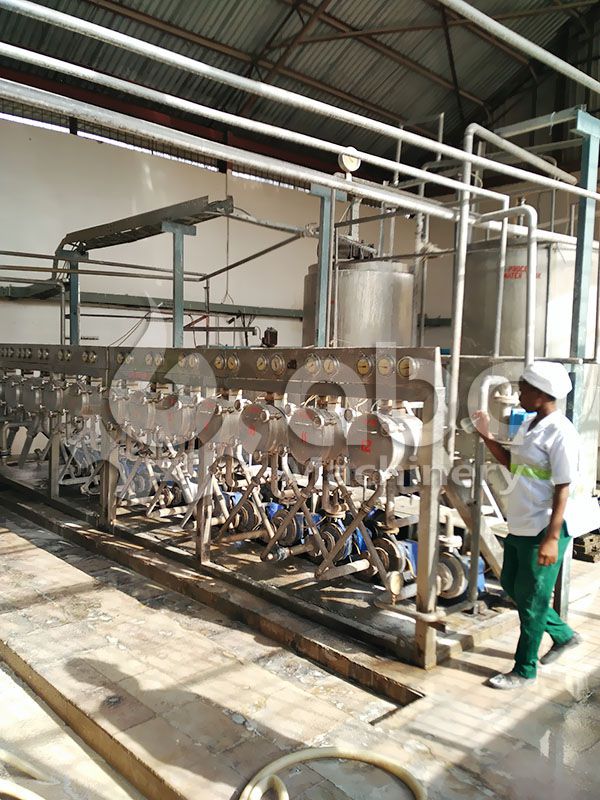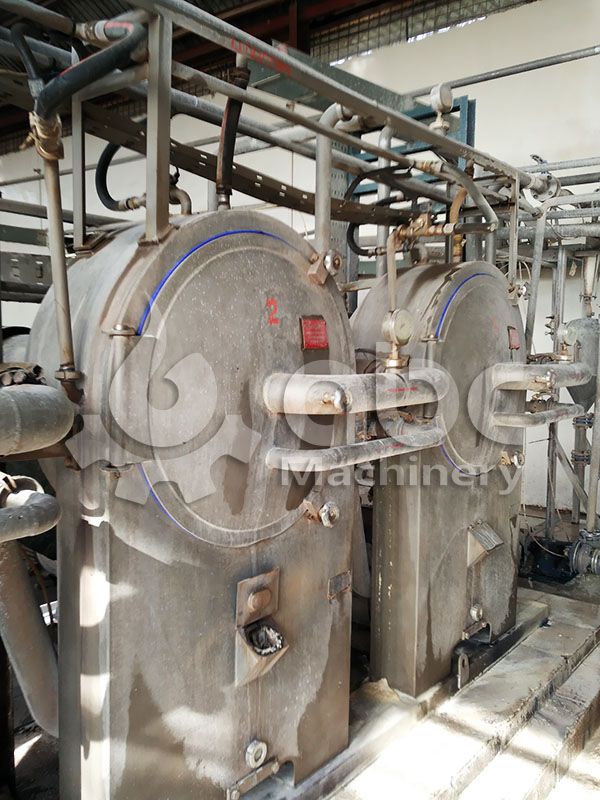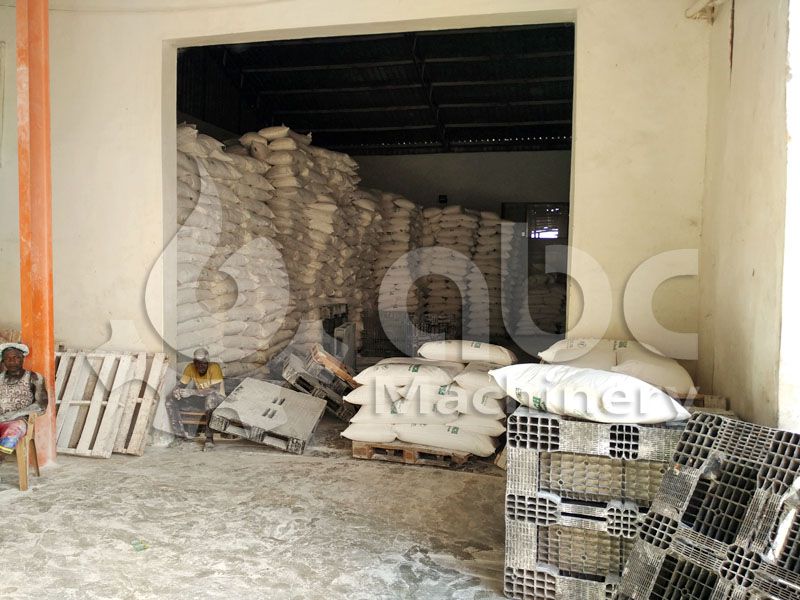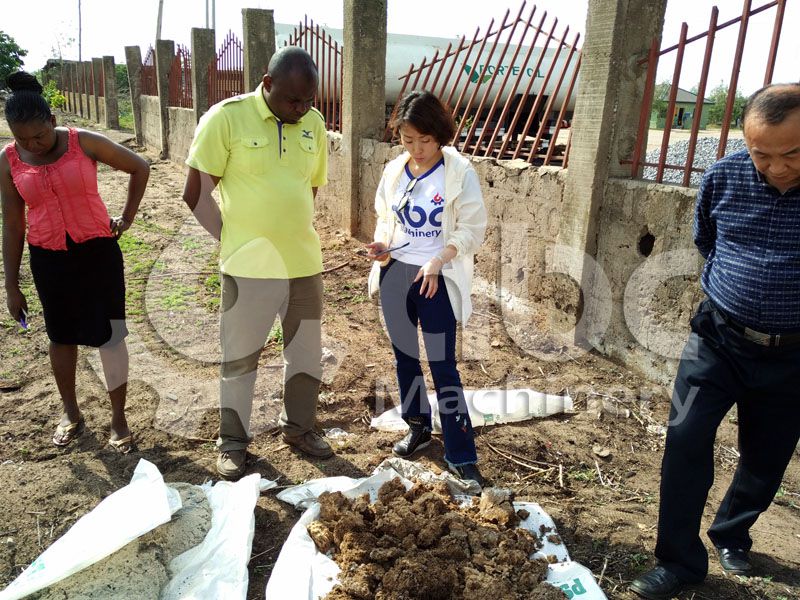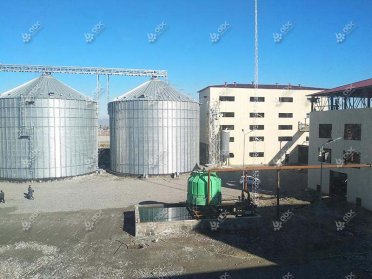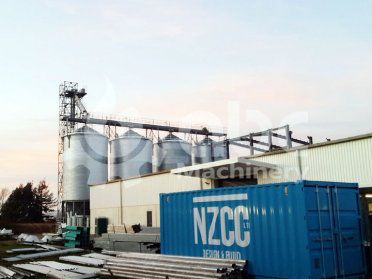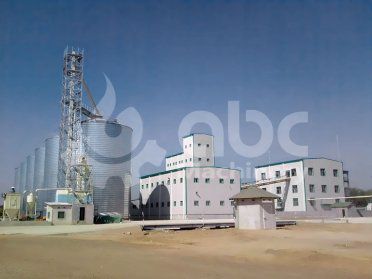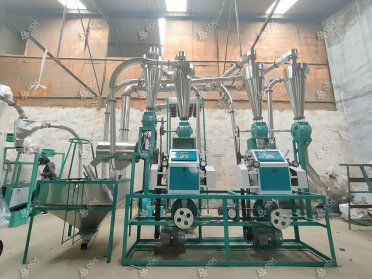
Cassava Processing Industry in Nigeria
The followings are some photos took during the trip. If you are planning to start a cassava processing factory for manufacturing cassava flour or cassava starch, feel free to get intouch weith us, and we are always glad to help you make the best business plan depending on you specific situation and needs!
Market Research of Nigeria Cassava Production
Nigeria held the top position in cassava production in the world among the countries. It produces approximately 45 million tons of cassava every year. They target to grow it more in future. But the high quality of cassava which encouraged them to set up some industries to cassava flour. The High Quality Cassava Flour (HQCF) industry in Nigeria is dominated by small scale.

Cassava Farming in Nigeria
Tapioca or Cassava is a kind of root enriched with vital nutrients. It is produced in large scale approximately 45 tonnes annually in federation states. It is expected that its production will be doubled by 2020. Among the cassava producing countries, Nigeria holds the top position in the world. In comparison, Nigeria produces cassava three times more than Brazil and approximately double than Thailand and Indonesia. Though from the point of production Nigeria stays mountain's top, 90% of their production is consumed domestically in their country.
Business Outlook of Nigeria Cassava Production
Traditionally cassava is one of the main foods to the Nigerian farmers. It is also widely consumed in other African countries. The cassava roots are used for making different kinds of local foods such as starch, ethanol, flour, and garri. Besides they are also used for making akpu and lafun. Cassava is randomly produced in every nook and corner of Nigeria. Nigerians say, if they produce it commercially it will be the substitute to white-gold even oil, exporting which they can earn a lot of foreign currency which will boost up their economy as well as it will create job opportunities which will help to eradicate employment problem. That will raise the country to the level of the developed state.
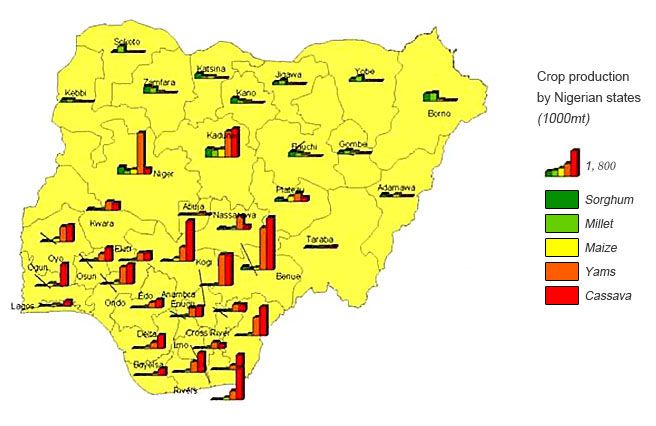
Crop Production by Nigerian States
Cassava can grow very easily in drought zone where rainfall is very limited. For their harden and tough capacity to survive in the drought, Nigerian farmers choose cassava to produce. Whole cassava from root to leave is consumable. They can make soup from cassava leaves also feed this leaves to their poultry animals. Besides cassava roots are used for multifarious purposes such as they are used to reproduce cassava, to produce mushroom, even they are used as firewood to cook food. Cassava root can be eaten fresh or by cooking and they can be crushed into flour to make flatbread. If it is industrially used, it can be raw materials for producing poultry feed pellets.
Starch and Flour made from Cassava
Indigenous peoples traditional food is cassava bread. It has miracle power to protect against modern diseases namely cardiovascular disease, diabetes, blood pressure and obesity. Cassava is also used in America as manioc or yuca. For so many splendid qualities it is used all over the world as a staple food.- Cassava Starch
Cassava roots are washed and pulped, then the wet pulped are squeezed to extract liquid to dry it. After water is removed from the wet pulp then the topica flour remains. Then this substance is used by food, paper, textile industries as well as in mineral wool and clay too.
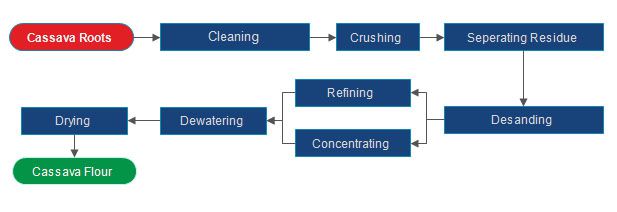
- Cassava Flour

Application of Cassava in Feed Industry
Food security all over the world has been on the rise as the world's population keep on expanding every year. In most cases both humans and livestock depend mostly on cereals for food, and this has led to competition for food as well as rations. This trend has been aggravated by the changing climate, overstocking, over exploitation of arable lands and more. In order to curb the looming challenge, the people ought to look for better and cost effective alternatives that are not only sustainable but also rewarding in the long run. With advancement in technology, man is able to identify cereal crops that can adapt to a wide range of environments.
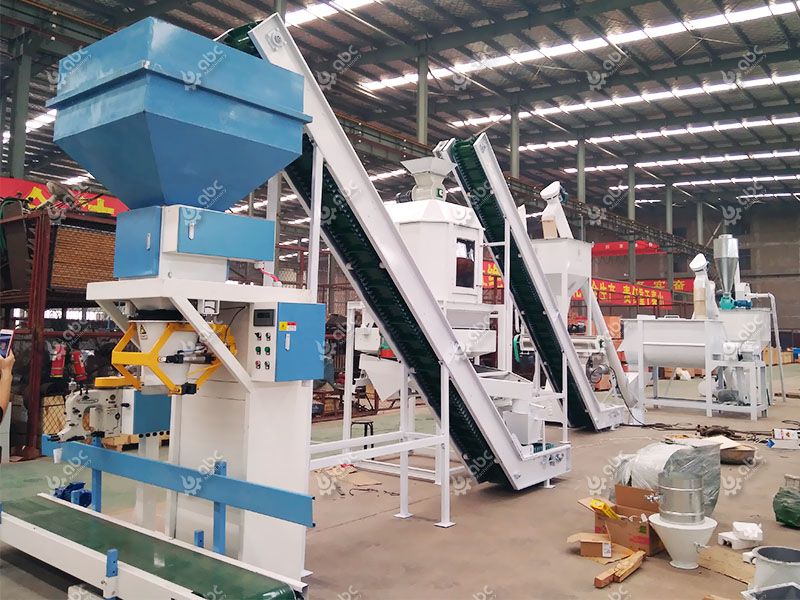
Animal Feed Production Business Plan for Small to Medium Feed Factory
A good example of such noble crop is cassava. Adopting this crop as a cheaper energy source is not only an ideal option to cut down the shortage, but also lower the production costs in various livestock farms, especially when it takes the place of costly cereals. This way, non-ruminants like poultry and pigs will be alleviated from such disaster.
The Top Different Feeds from Cassava Plant
Since cassava plant can produce several tubers at the end of every season, grower can harvest the tubers to make feedstuffs; for instance leaves, pellets and root chips. The procedure of making these feeds is very simple. it involves harvesting the cassava root (tuber), which in turn is cut into small pieces (chips) and left to dry in the sun. Once the chips are dry, they are shredded into different sizes. Remember the quality of the feedstuff depends on rate of drying, and making sure that the processing unit is free of contaminants. Once the root has been shredded and dried well, it can either be mixed as a feed ration or made into pellets. It is worth mentioning that the root pellet feature a consistent cylindrical product whose length and diameter measures approximately 1.0-2.0cm and 0.5-0.8 cm respectively.

Cassava Residue、Pulp and Leaves Applied in Poultry Feed Manufacturing
Some of the key reasons for converting the cassava tuber into pellets include:
Making transportation easy, reducing dust issues, and space utilization.
On the other hand, cassava leaves can be used to make poultry feed. As a matter of fact, cassava leaves is about 10-40 % of the total plant weight. However, the weight of the leaves is influenced by a number of factors such as ecological conditions, fertility and age of the plant. It is ideal to harvest the plant leaves when the plant is 4 to 5 months old. One hectare of cassava plantation can yield up to 10 tons of dry leaves. The dried foliage can be ground into fine particles to make poultry feeds.
Despite the fact that cassava roots and leaves can supply carbohydrates and proteins for birds correspondingly, but this option pose a number of challenges, including contamination, lack of enough labor, pest and diseases, high cost of processing and more. The good news is that cassava waste from industries can reused to make animal feedstuffs thus protecting the environment.

 Build Your Future!
Build Your Future!
